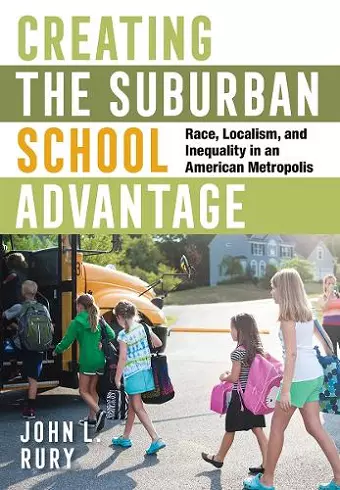Creating the Suburban School Advantage
Race, Localism, and Inequality in an American Metropolis
Format:Hardback
Publisher:Cornell University Press
Published:15th Apr '20
Currently unavailable, and unfortunately no date known when it will be back
This hardback is available in another edition too:
- Paperback£23.99(9781501764622)

Creating the Suburban School Advantage explains how American suburban school districts gained a competitive edge over their urban counterparts. John L. Rury provides a national overview of the process, focusing on the period between 1950 and 1980, and presents a detailed study of metropolitan Kansas City, a region representative of trends elsewhere.
While big-city districts once were widely seen as superior and attracted families seeking the best educational opportunities for their children, suburban school systems grew rapidly in the post–World War II era as middle-class and more affluent families moved to those communities. As Rury relates, at the same time, economically dislocated African Americans migrated from the South to center-city neighborhoods, testing the capacity of urban institutions. As demographic trends drove this urban-suburban divide, a suburban ethos of localism contributed to the socioeconomic exclusion that became a hallmark of outlying school systems. School districts located wholly or partly within the municipal boundaries of Kansas City, Missouri, make for revealing cases that illuminate our understanding of these national patterns.
As Rury demonstrates, struggles to achieve greater educational equity and desegregation in urban centers contributed to so-called white flight and what Senator Daniel Patrick Moynihan considered to be a crisis of urban education in 1965. Despite the often valiant efforts made to serve inner city children and bolster urban school districts, this exodus, Rury cogently argues, created a new metropolitan educational hierarchy—a mirror image of the urban-centric model that had prevailed before World War II. The stubborn perception that suburban schools are superior, based on test scores and budgets, has persisted into the twenty-first century and instantiates today's metropolitan landscape of social, economic, and educational inequality.
Creating the Suburban School Advantage: Race, Localism, and Inequality in an American Metropolis provides the reader with a detailed, interesting, thoughtful, and disturbing picture of an American city and surrounding suburbs to help us understand who, what, where, why, and how metropolitan inequality developed after World War II.
* Journal of Urban Affairs *Creating the Suburban School Advantage makes an important contribution to the history of education. With few exceptions, accounts of postwar schooling in the United States have focused almost exclusively on the 'rise and fall' of large urban systems. As Rury demonstrates in meticulous detail [about Kansas City], the flip side of urban decline was suburban growth, and now a synthetic account connects these mutually constitutive processes.
* History of Education Quarterly *Creating the Suburban School Advantage is an impressive contribution to the growing literature about how Americans with power and influence used the processes of suburbanization to develop remarkably inequitable school systems in the long postwar era. Rury's interdisciplinary approach is another of the book's strengths. In the introduction alone, he builds an argument with ideas from law, sociology, human ecology, urban planning, and demography, among other fields. Yet none of this disciplinary hopping detracts from the book's historical analysis, nor from its prose or narrative clarity.
* Journal of Interdisciplinary History *In this engaging text, Rury explores societal conflict, boundary construction and maintenance, uneven power relations, the influence of public attitudes, and various other social conditions relevant to suburban expansion. Creating the Suburban School Advantage is an accessible and instructive monograph that will be a great addition to courses on the political, historical, or sociological dimensions of education.
* American Historical ReviISBN: 9781501748394
Dimensions: 229mm x 152mm x 25mm
Weight: 907g
276 pages